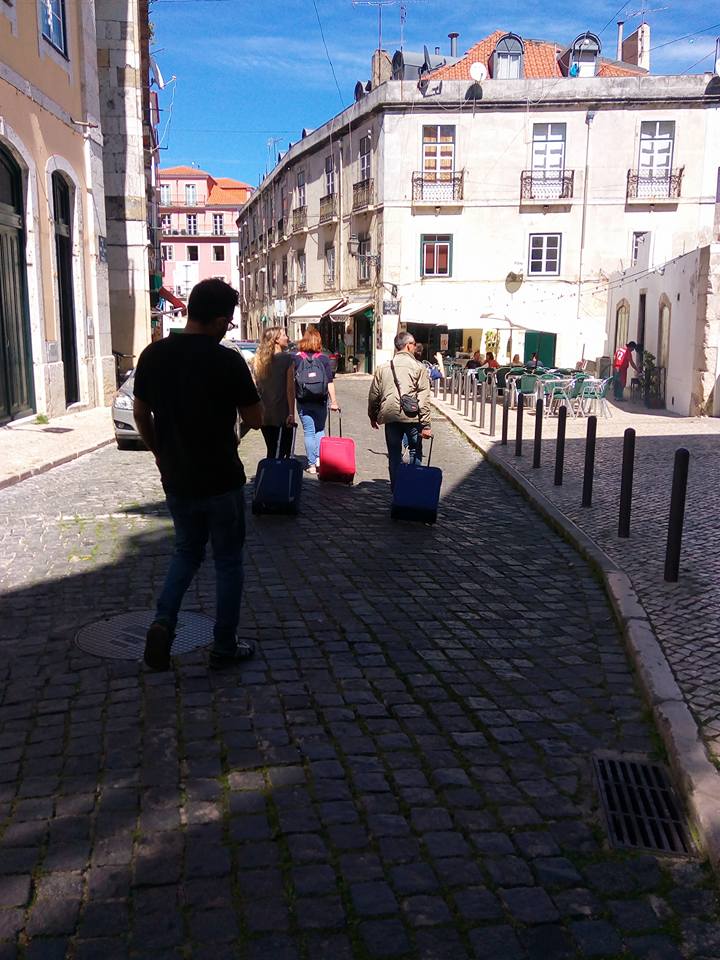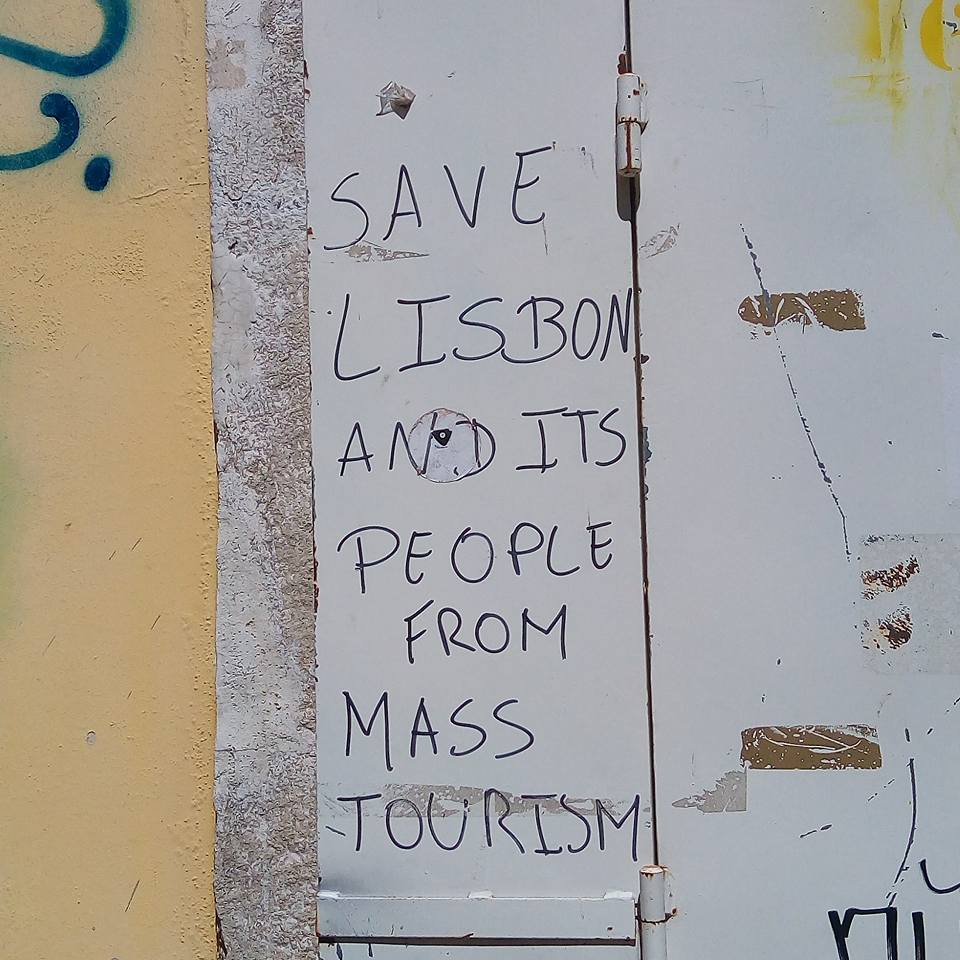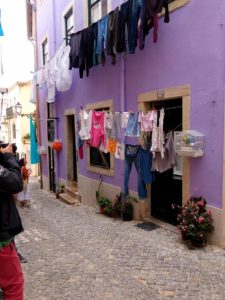The Rise of Tourism in Sunny Lisbon (Portugal) and Touristification
By: Filipa Fernandes
Centro de Administração e Políticas Públicas, Instituto Superior de Ciências Sociais e Políticas, Universidade de Lisboa
Tourism in the city of Lisbon (capital city of Portugal) has been growing in recent years. In 2016 the number of tourists exceeded the 6 million mark, representing a 29.9% of total demand in the country. In 2016 it was ranked the 61st most visited city in the world and one of the Fastest-Growing Destination Cities in Europe (7.4%). The growing popularity of the Portuguese capital is shown in a number of recognitions given by the World Travel Awards since 2009. The proliferation of short-breaks and the increase in the number of low-cost flights through Lisbon Airport have been pointed out as factors for the increase of tourism in the Portuguese capital.

Tourism is central to local economies, contributing to the creation of jobs and the emergence of new opportunities. In some cities tourism is the main economic activity and the only source for the economic development of that locality (Van der Borg, Costa and Gotti, 1996). However, there are cities affected by the pressure of the tourism sector, in which conflicts arise between residents and stakeholders. Across Europe there are echoes of overtourism, tourismphobia, and gentrification. Some talk of fighting tourism for the possible consequences it has on the real estate market. Mass tourism modifies the relationship between hosts and guests. This pressure of tourism is evidenced in urban centers by the availability of accommodation offered through new platforms associated with shared economies (Gutiérrez et al, 2017).
Tourism also contributes to changes in city spaces. Through this process, commonly known as touristification, tourism interacts with the territories; bringing about transformations in social, cultural, economic, political, physical and environmental contexts; introducing new objects (accommodation, leisure facilities, leisure, catering, etc.) and taking possession of objects already present, giving them new meanings.
Research in progress
Currently I’m conducting an ongoing research project that aims to analyze the processes of transformation of places in Lisbon. With the increasing abundance of tourist territories, it is essential to analyze the processes, dynamics and actors involved in tourism processes.
My main goals are: identify the actors and analyze the processes and dynamics of tourism; understand the forms of interaction between hosts and guests and the new hospitality; identify and examine the forms of hospitality and shared economies; and finally, examine which global discourses are produced locally.
My ongoing fieldwork in Lisbon (in particular, in Alfama and Bairro do Castelo) makes use of qualitative methodology: mainly ethnography, bibliographic research and content analysis (media articles, Airbnb platform, tourism websites and tourist booking portals). I intend to show how tourism contributes to the processes of transformation and co-production of places. The emphasis will be placed on the influence of the local population, government agents and other players in tourism development processes.
Some findings
The increase of the tourist hordes in the city has contributed to changes in housing and in businesses. Residents leave some neighborhoods due to high rents. Locals cannot rent a house, given the very high rents that are charged by landlords.
“Those who stay are all elderly people, when they die the houses are remodeled and sold, giving rise to hotels, hostels, rooms for rent.” (woman, resident in Bairro do Castelo).
With external investments new and renewed spaces are built to accommodate tourists. An example is the Lusitano Club, a collective founded in 1905 that closed its doors this year and was replaced by luxury apartments.
“I lived there for about 30 years, we were put on the street because the building was sold for tourism. I come to Alfama every day. My sister and I clean the apartments in the building where we used to live. One day we will have only tourists in the neighborhood! “(Woman, 50-60 years, April 26, 2017).
This daily movement of people brings with it concerns on the part of some residents about the appropriation of the neighborhood. As one woman said “one of these days they come here and it will be only tourists; tourists to see tourists “(50-60 years, April 26, 2017).

In some cases residents complain about the noise.
“Over where I live everything is rented to tourists and there is always a lot of noise with the suitcases when entering and leaving the house, several times the threatening ones that called the police, “(woman, resident in Bairro do Castelo).
The process of touristification taking place in Lisbon has changed urban spaces. In Alfama, the boom in tourism has led to the abandonment of residents of the neighborhood, which has lost its character, according to some residents. The introduction of the new rent and lease Law has complicated the lives of some residents who have been forced to move to other places and some residential spaces have been used for tourism purposes.
These new paradigms of hospitality have advantages, above all, in the rehabilitation of homes and local commerce. As one woman asserted, “tourism is good for the economy, for the neighborhood” (Souvenir shop / Art gallery, woman).
Nowadays there are new collaborative forms of travel, Airbnb being one example, and there is a place for the development of tourism whose prominent role goes to the local communities. In the post-tourist world the place is co-constructed by the multiple actors present in the heart of the tourist destinations. The experiences break the formal models, witnessing relationships outside the usual tourism circuit. One observes how the ‘local’ comes to be seen and desired as authentic by many. The seduction of these spaces involves the possibility of experiencing a part of everyday life at the heart of local communities. However, this growing demand has led to negative consequences, distancing local inhabitants from these spaces and contributing greatly to the phenomenon of gentrification.

References:
- Gutiérrez, J., García-Palomares., J. C., Romanillos, G., Salas-Olmedo, M. H., 2017, The eruption of Airbnb in tourist cities: Comparing spatial patterns of hotels and peer-to-peer accommodation in Barcelona, Tourism Management, 62:278-291.
- Van der Borg, J., Costa, P., Gotti, G., 1996, Tourism in European heritage cities, Annals of Tourism Research, 23:2, 306-321.